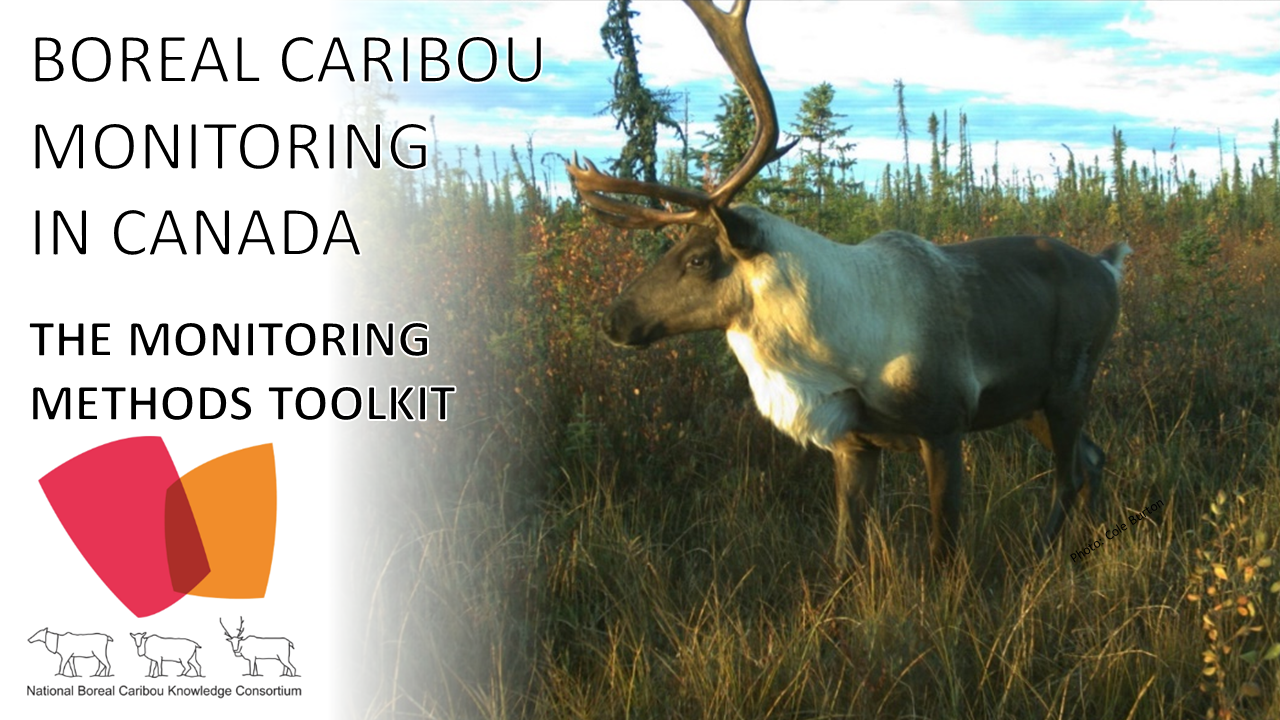The 2018 Action Plan for the Woodland Caribou (Rangifer tarandus caribou), Boreal Population, in Canada: Federal actions for the Threatened boreal caribou called for the collaborative development of national population monitoring protocols. In 2018, the National Boreal Caribou Knowledge Consortium (NBCKC) formed its first working group, the Monitoring Working Group, to investigate caribou population monitoring priorities, methods, constraints, and best practices.
Knowledge sharing, generation, and mobilization from the Monitoring Working group
Knowledge sharing:
The Monitoring Working Group first conducted interviews with experts and knowledge holders from across Canada, to (i) investigate the diversity of monitoring priorities and constraints across the boreal range, (ii) document the variability in methods used, and (iii) capture the perspectives and concerns expressed by individuals and organizations. The information arising from these interviews was then used to produce a report, Boreal Caribou Monitoring in Canada Part I: Perspectives from the NBCKC Monitoring Working Group.
Knowledge generation and mobilization:
Having established and documented the perspectives surrounding boreal caribou monitoring, the working group then aimed to develop a set of guidance tools for the design and selection of suitable methods for monitoring boreal caribou populations under different scenarios. These tools are intended to inform both the development of emerging monitoring programs as well as the re-evaluation of current monitoring practices. This work is ongoing, however, the working group has released a number of tools to the ever-evolving Boreal Caribou Monitoring Toolkit ("the toolkit").

The current objectives of the toolkit are:
- To centralize existing resources relevant to the monitoring of boreal caribou,
- To provide valuable and accessible guidance for anyone engaged in, or planning to initiate, monitoring programs, and
- To identify where knowledge gaps still exist, such that toolkit users may see opportunities to contribute resources to the toolkit. It is important to highlight that the toolkit is intended to be an 'evergreen' resource; as new resources and information are brought forward, these may be added to the toolkit as standalone pieces or may be incorporated into existing tools. To be clear, toolkit users are encouraged to submit resources and documents they feel would enhance the overall value of the toolkit.
Be sure to view the Boreal Caribou Monitoring toolkit by clicking the image.
Be sure to read more about the Monitoring Working Group by clicking here

